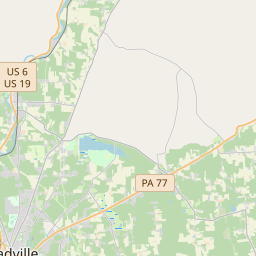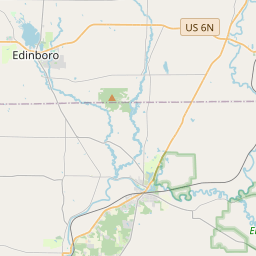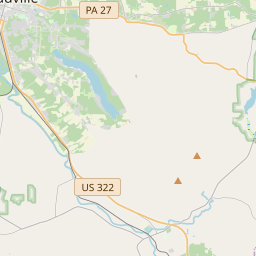Visit Us
National wildlife refuges offer us all a chance to unplug from the stresses of daily life and reconnect with our natural surroundings. More than 40% of Erie National Wildlife Refuge is comprised of wetland habitats, including beaver ponds, emergent marshes, wet meadows, forested wetlands, and creeks that provide desirable habitat for a variety of migratory birds and waterfowl. The refuge is just under an hour drive from the city of Erie, Pennsylvania.
The refuge includes several scenic trails that pass through upland forest, forested wetlands, and wet shrublands. Our Visitor Information Center is located at our headquarters, where visitors can purchase Duck stamps. From headquarters, visitors can access the 1.2-mile Tsuga Trail which winds through a variety of habitats including dense, hemlock thickets, mixed hardwood forests, meadows, and wetlands. Other public uses at the Sugar Lake Division include a waterfowl and wildlife observation blind located at Reitz Pond, the observation deck located along the Deer Run Trail, and the fishing pier located at the Deer Run trailhead.
Location and Contact Information
- Erie National Wildlife RefugeView Details11296 Wood Duck Lane Guys Mills, PA 16327-9499
About Us
Erie National Wildlife Refuge was established in 1959. The first lands for the refuge were purchased with funds provided from the sale of the Migratory Bird Hunting and Conservation Stamps (also known as Duck stamps). Erie refuge is a namesake of the Erie Indians, a Native American tribe that resided in the area.
What We Do
Wildlife conservation is at the heart of the National Wildlife Refuge System. It drives everything on U.S. Fish and Wildlife Service lands and waters managed within the Refuge System, from the purposes for which a national wildlife refuge national wildlife refuge
A national wildlife refuge is typically a contiguous area of land and water managed by the U.S. Fish and Wildlife Service for the conservation and, where appropriate, restoration of fish, wildlife and plant resources and their habitats for the benefit of present and future generations of Americans.
Learn more about national wildlife refuge is established to the recreational activities offered to the resource management tools used. Using conservation best practices, the Refuge System manages Service lands and waters to help ensure the survival of native wildlife species.
Our Species
Erie is the only refuge in the nation protecting endangered northern riffleshell and clubshell mussels. French Creek, the most biologically diverse stream in Pennsylvania, flows near the Refuge where over 80 species of native fish are found.
Get Involved
Whether you want to further conservation, learn more about nature or share your love of the outdoors, you’ve come to the right place. National wildlife refuges provide many opportunities for you to help your community and fish and wildlife by doing what you love.
Projects and Research
The work that we conduct at the refuge focuses on understanding the needs of endangered species; developing strategies to combat climate change climate change
Climate change includes both global warming driven by human-induced emissions of greenhouse gases and the resulting large-scale shifts in weather patterns. Though there have been previous periods of climatic change, since the mid-20th century humans have had an unprecedented impact on Earth's climate system and caused change on a global scale.
Learn more about climate change impacts; and habitat management for a variety of species, including migratory birds.
The U.S. Fish and Wildlife Service has decided to pause our planning efforts to consider authorizing a new refuge in the French Creek Watershed. This pause will allow us an opportunity to further understand what role, if any, the Service could play to better support local conservation needs. Robust community engagement and support is essential when considering the...




















